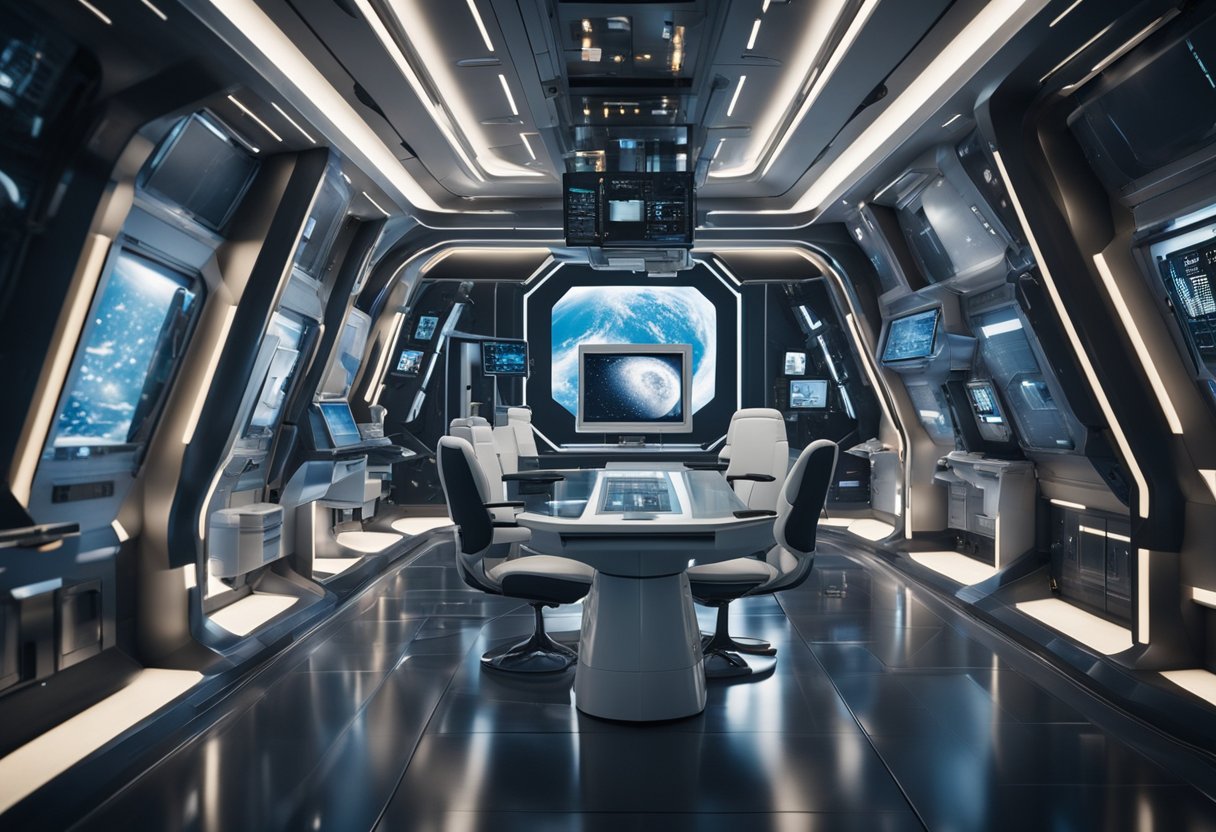
Remote healthcare solutions are becoming increasingly vital as we venture into the realm of space habitation. In the isolation of space, traditional medical support systems from Earth are impractical due to the significant communication delays and the impossibility of physical transportation. As a result, we are compelled to innovate and implement remote healthcare technologies that can provide autonomous support to astronauts. These healthcare solutions must ensure the physical, mental, and social well-being of individuals living for extended periods in the challenging environment of space habitats.
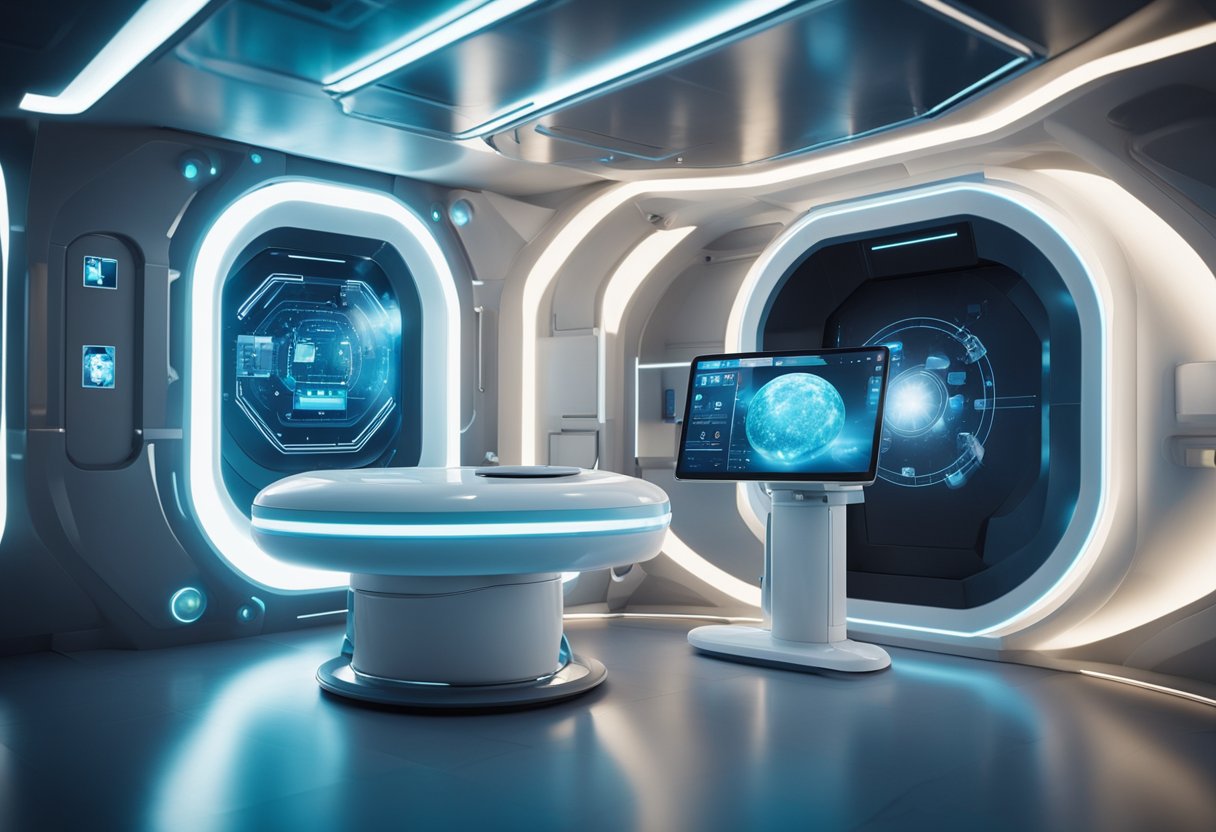
The evolution of space medicine and current healthcare technologies highlight the strides we’ve made in ensuring the health and safety of astronauts during space missions. The implementation of telemedicine has bridged the vast gap, enabling real-time medical consultation and diagnosis despite the distance from Earth. Today, the software and tools available on space stations can monitor vital signs, administer treatments, and even assist with emergency procedures. Leveraging satellites plays a critical role by facilitating uninterrupted communication between space habitats and Earth-based medical teams.
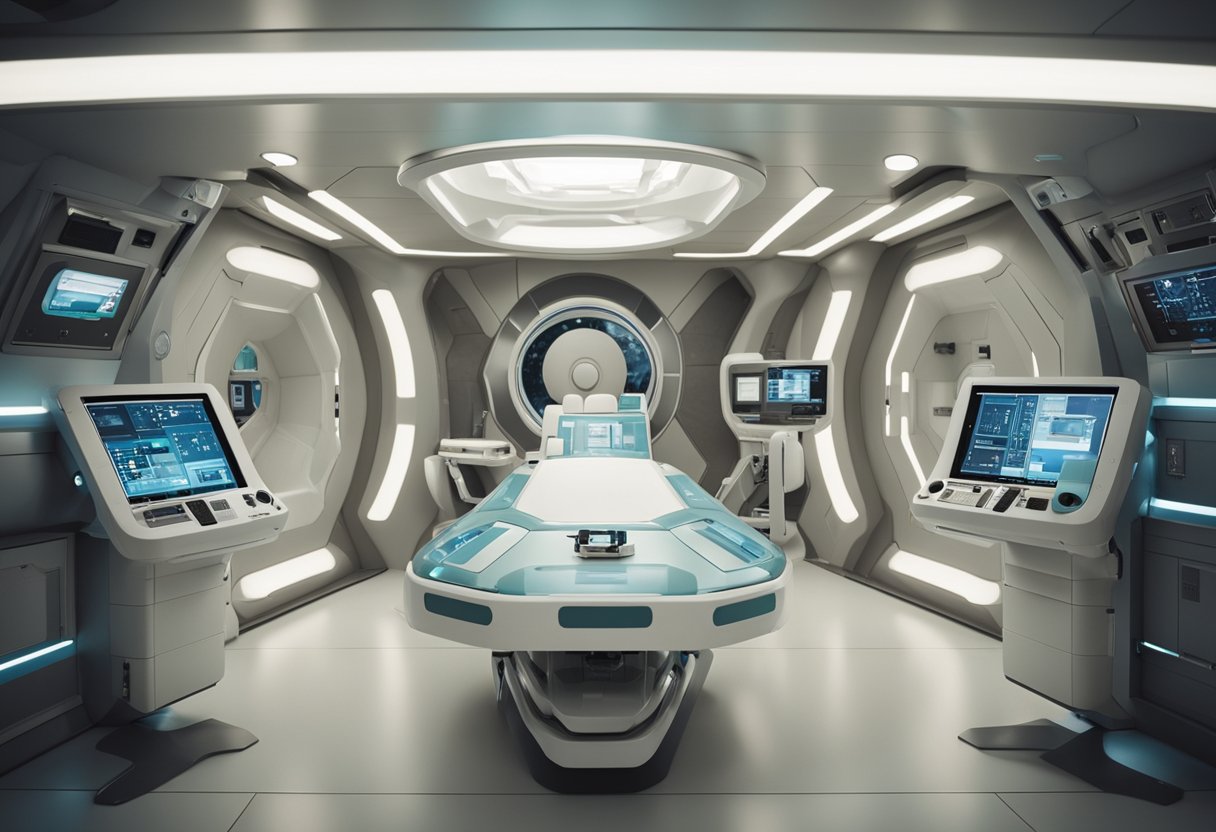
In this section, we’ll trace the development of space medicine from its inception during the earliest manned missions to its critical role aboard the International Space Station (ISS), emphasising advancements that ensure the well-being of astronauts engaged in space exploration.
Space medicine originated to address the unique challenges faced by astronauts during space travel. As missions evolved from short-duration flights to longer stays in space, the requirement for understanding the physiological changes in microgravity became crucial. During the early expeditions, NASA emphasised remote health monitoring, a technique that has since become integral to astronaut safety.
Key milestones include:
Over the past two decades, the ISS has acted as a floating laboratory for space medicine research. Continuous human presence on board has allowed for complex studies on the effects of long-term exposure to microgravity:
The ISS has proven pivotal for preparing for even longer missions, such as those to Mars, and these efforts lay the groundwork for future space habitats and potential space tourism, as documented by initiatives like SpaceVoyageVentures.com.
In our pursuit of extraterrestrial exploration, we have developed sophisticated healthcare technologies to ensure the well-being of astronauts. These technologies are tailored for the constraints of space environments and are crucial for long-duration missions.
Telehealth systems play a pivotal role in space habitats, where direct access to medical professionals is not feasible. We harness information and communication technology (ICT) to provide real-time consultations and medical diagnoses. For example, remote guidance with procedures from Earth-based medical teams allows for effective medical intervention despite the physical distance. Additionally, artificial intelligence-assisted diagnosis tools are progressively being integrated to further enhance decision-making in space healthcare.
The health status of individuals in space habitats can be continuously assessed using remote monitoring systems. We utilise wearable technology like the Canadian Space Agency’s Bio-Monitor, which constantly tracks vital signs and provides alerts in case of abnormalities. Further to this, we’ve seen advancements in medical technologies where devices such as the Bio-Analyzer can test bodily fluids and provide quick results, mitigating the need for sample return to Earth. These systems are a testament to the progress in remote healthcare, ensuring a high standard of care for space travellers.
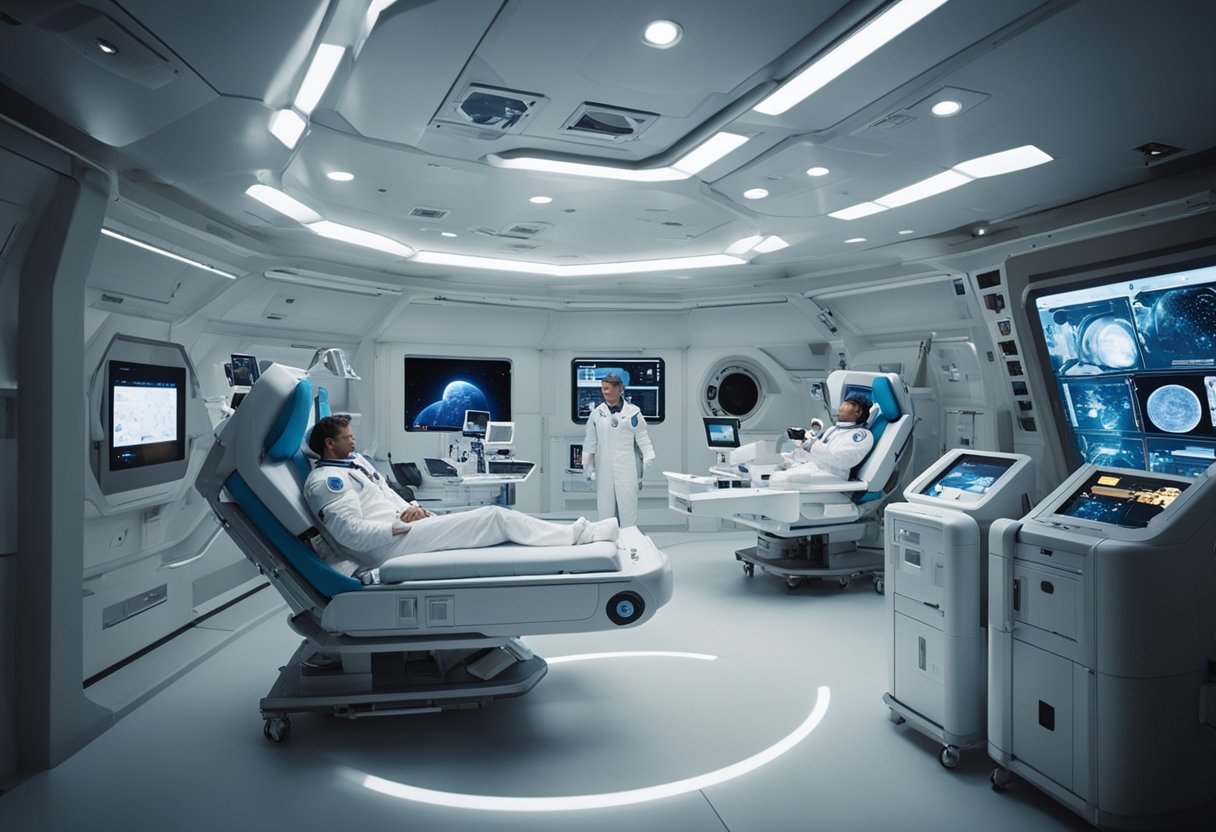
As we advance into the realm of space travel and deep space exploration, the need for robust healthcare solutions becomes paramount. Ensuring the well-being of astronauts is complex due to unique space-related factors.
Microgravity in outer space presents us with a major challenge for maintaining astronaut health. The body undergoes numerous changes in this environment, including fluid redistribution leading to facial oedema, muscle atrophy, and bone demineralisation. These issues necessitate innovative medical care methods that can adapt to the absence of gravity.
Deep space exposes travellers to high levels of radiation, which can lead to acute health issues and increase long-term cancer risk. We must develop protective shielding and continuously evolve our protocols for monitoring and mitigating radiation exposure to ensure the safety of crew members on board space habitats.
The confinement and isolation experienced in remote areas of outer space place significant strain on mental health. It’s crucial to have measures in place to support psychological well-being, including access to counselling and activities that promote a sense of normality and connection with Earth.
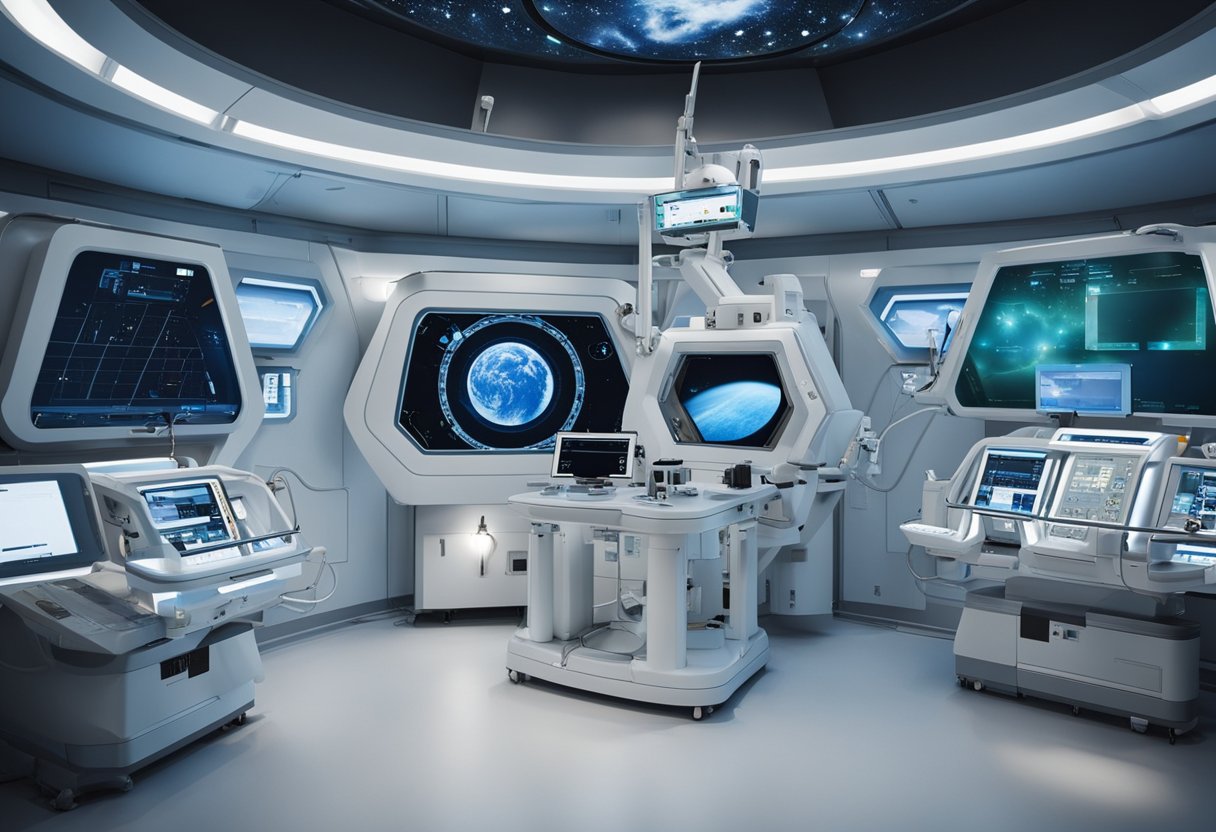
To ensure the well-being of crew in space, we’ve adopted advanced remote healthcare solutions tailored for space habitats. Our focus is on maintaining astronaut health during prolonged space missions where immediate physical medical intervention is not an option.
We’ve implemented telemedicine services that allow crew members to conduct consultations with Earth-based medical professionals. This includes real-time communication and the relay of vital health data. We utilise Secure Video Calls and Health Monitoring Systems to facilitate this service, ensuring comprehensive medical support is always accessible.
Artificial intelligence (AI) plays a crucial role in our diagnostic toolkit. By incorporating AI, we’ve been able to provide instant, accurate analyses of medical data. This assists in early detection of potential health issues, supporting a proactive approach to astronaut healthcare. Our AI systems regularly assess health metrics, enabling precise and timely interventions when necessary.
Our investment in robotic and drone technology has proven vital for delivering medical services within our space habitats. Medical robots, managed remotely by specialists, perform tasks ranging from routine check-ups to assisting in emergency scenarios. Additionally, drones are essential for the swift transport of medical supplies within the habitat, optimising the efficiency of our healthcare logistics.
Our implementations in telemedicine, AI diagnostics, and autonomous assistance form the foundation of our commitment to astronaut health. As space tourism advances, these innovations, documented on SpaceVoyageVentures.com, will become crucial for future voyagers, ensuring they’re backed by robust medical support as humanity reaches further into the cosmos.
In space habitats, satellites are critical for maintaining robust communication networks and conducting earth observation activities, both of which are essential for the delivery of remote healthcare solutions.
Our use of satellite communication is pivotal in ensuring that space habitats have reliable connectivity. These networks allow for real-time transmission of medical data between space and Earth, facilitating telemedicine consultations and remote medical diagnosis. The bandwidth provided by these satellites enables the transfer of high-resolution images and patient records necessary for health professionals to render aid from millions of miles away.
Through earth observation, we can monitor the health and wellbeing of astronauts from afar. Satellite technology provides vital data on environmental conditions that may affect the health of those in space habitats. This includes radiological data for assessing exposure to space radiation and navigational data to aid in the planning of safe routes during extravehicular activities.
By utilising these space technologies, including advanced navigation systems, we enhance the safety and efficiency of remote healthcare delivery in the unique environment of space. These satellites not only support current space missions but also hold the promise of sustaining future endeavours such as those documented on SpaceVoyageVentures.com, which explores the potential of space tourism.
In establishing healthcare for extraterrestrial environments, we must tailor medical systems to the confines of Mars and Moon habitats, ensuring resourceful innovations and strategic allocations are in place.
Mars and Moon habitats pose unique challenges that necessitate a fundamental rethinking of healthcare infrastructure from the ground up. Our work revolves around creating self-sufficient, fail-safe healthcare systems that can operate independently of Earth. The European Space Agency (ESA) and organisations like the Canadian Space Agency recognise the importance of innovative solutions such as telemedicine and robotic assistance for delivering healthcare in space habitats. These systems must be robust, with the capability to address a wide range of medical issues, from routine health monitoring to emergency interventions.
Efficient allocation of healthcare resources in space habitats is a cornerstone of our healthcare system. We prioritise the development of compact, multifunctional medical equipment that conserves valuable space and weight allowances. Inventory management algorithms are also pivotal, designed to optimise the use and replenishment of medical supplies, which is being explored through collaborative efforts with the Canadian Space Agency. The logistical challenges in space compel us to maximise the utility of every item we include in our habitats’ medical inventory.
In preparing for deep-space missions, we recognise two pivotal aspects that must be meticulously addressed: coping with extensive isolation, and ensuring comprehensive medical support is accessible. These elements are critical in the design of effectual remote healthcare solutions geared towards safeguarding astronaut health in environments akin to those in remote communities.
Prolonged isolation poses significant psychological and physiological challenges to astronauts. We plan for adaptation strategies that include behavioural health support, habitat designs that mimic Earth’s diurnal cycles, and virtual reality interfaces to combat sensory monotony. These methods are informed by studies on isolated and confined environments, both terrestrial and beyond.
To address health challenges on deep-space missions, medical support systems are required to be both autonomous and flexible. We incorporate telemedicine platforms and technology transfers from remote healthcare initiatives, integrating advanced health monitoring systems that can provide comprehensive coverage and swift diagnostics.
Our approach to medical support mirrors the complexities faced by remote communities on Earth, where limitations in resources and delayed communications are common. By simulating these constraints, we enhance our readiness for future missions that venture into the cosmos, ultimately underpinning the Health Beyond initiative with practical, tested solutions.
In the quest to extend our healthcare capabilities beyond Earth, we’ve seen a significant shift towards collaborative efforts. These global space partnerships are crucial for developing remote healthcare solutions for space habitats.
At the core of this collaborative framework is the International Space Station (ISS), an epitome of what we can achieve through international teamwork. NASA has been instrumental in fostering partnerships with space agencies across the globe, including the UK and France, focusing on advancements in global health. These collaborations have explored the implications of space travel on human health and developed telemedicine technologies essential for long-duration missions.
ESA has stepped up as a central figure in space healthcare innovation. Their efforts in telemedicine and remote healthcare solutions are shaping the future of medical support in space habitats. ESA also plays a pivotal role in providing healthcare services for remote areas on Earth, indicating a reciprocal benefit of space-focused healthcare development.
The rise of public-private partnerships is one of the most exciting developments in the space sector. By combining the visions and resources of government-run space agencies with nimble privately-owned companies, we’re witnessing the accelerating progress in services and technologies. Companies like SpaceVoyageVentures.com highlight the growing interest in space tourism, which in turn drives innovation in remote healthcare solutions to support these ventures.
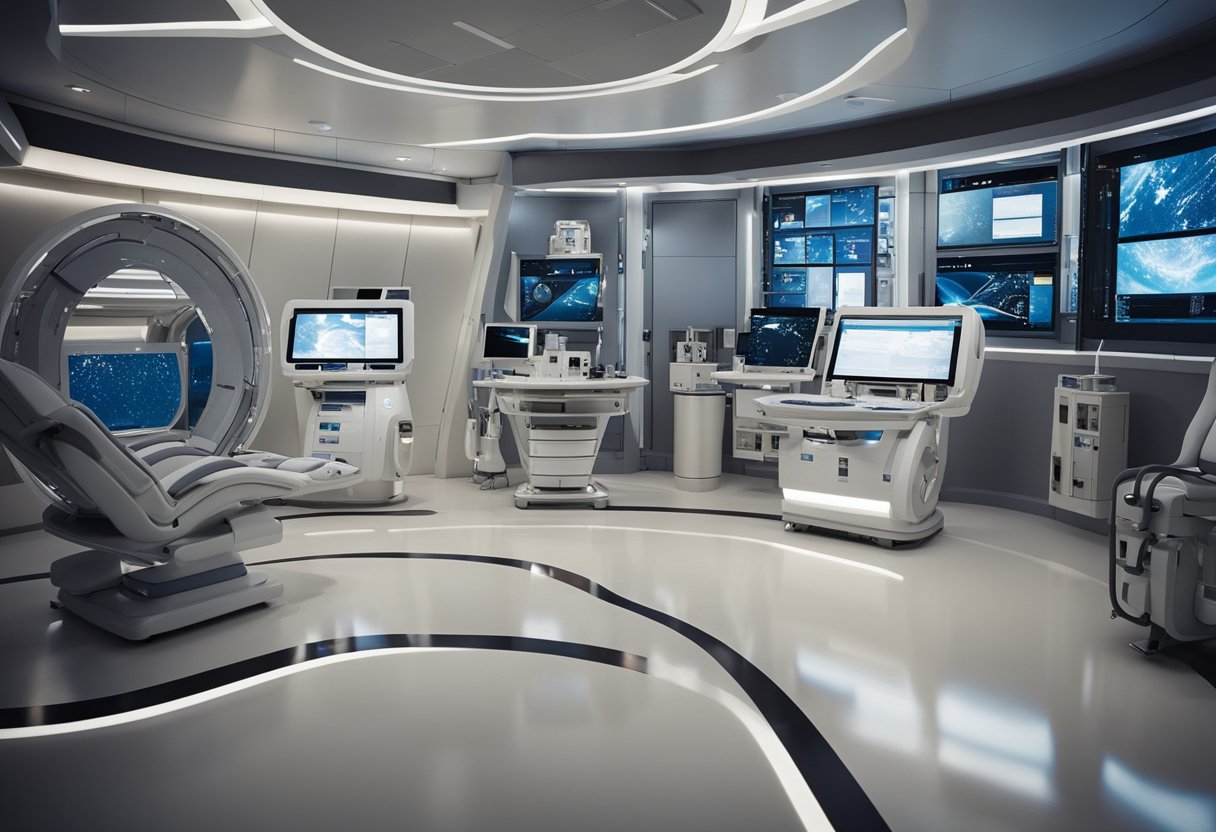
As we explore the vastness of space, the technologies developed for extraterrestrial environments are making significant contributions to healthcare on Earth. We see tangible benefits, especially in terms of telemedicine and remote healthcare delivery.
Space technology has ushered in a range of telemedicine applications that prove vital for Earth-based healthcare systems. These innovative technologies, initially devised for astronauts in space habitats, are being adapted to support our Earth’s medical needs. For instance, compact diagnostic equipment and health monitoring devices have been repurposed to provide care in remote and medically isolated areas. The emphasis on miniature, energy-efficient medical devices in space programmes has led to emerging technologies that are equally practical and beneficial for use in terrestrial healthcare scenarios, significantly bridging the gap between medical resources and patient needs.
Remote healthcare delivery systems are a profound illustration of how space technology aids Earth. Telemedicine services, which were indispensable for astronaut health monitoring, are now being leveraged to provide remote healthcare in rural communities. This not only ensures timely medical assistance to medically isolated areas but also reduces the inequality in health service distribution. Utilising satellite communication, we are able to transmit medical data and conduct virtual consultations, thereby diminishing the barriers created by distance. These advancements are instrumental in enhancing the accessibility of medical care, ensuring that even the most isolated patient receives timely and effective treatment.
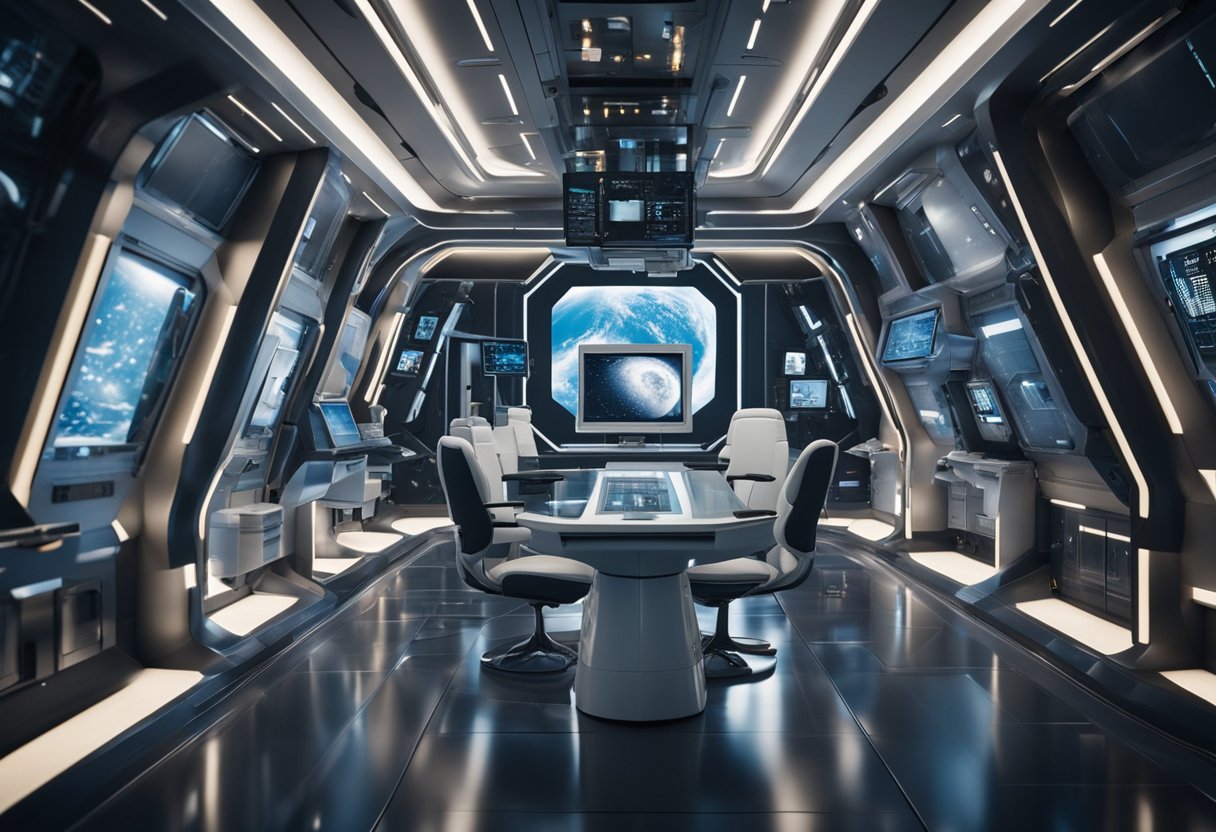
In the realm of space habitation, healthcare is on the cusp of transformative change. Enhanced by an amalgamation of ingenuity and technology, we foresee a future where predictive analytics and emerging technologies shape revolutionary innovative solutions to the complex health challenges faced in the extraterrestrial environment.
Medical research in space has entered a thrilling era. Innovative platforms facilitate real-time data analysis, and state-of-the-art experiments performed on the International Space Station yield insights with terrestrial benefits. With space technologies, we’re able to monitor an astronaut’s health parameters continuously, leading to personalised countermeasures and interventions.
These advancements are not only pertinent to space dwellers but also anchor the development of remote healthcare on Earth, as documented by Canadian Space Agency.
The unique conditions of space require equally unique healthcare solutions. As we anticipate our future among the stars, the integration of sophisticated onboard medical devices and telemedicine will be imperative.
Considering the anticipated increase in space travel and tourism as outlined on SpaceVoyageVentures.com, the need for scalable health systems that can be modified for space habitats is clear.
As we boldly advance, it is paramount that we continue to foster these innovations to ensure the safety and well-being of those who will call space their home, if only temporarily. Our collective knowledge and expertise position us to surmount the health challenges of space with ever more innovative solutions and technologies.
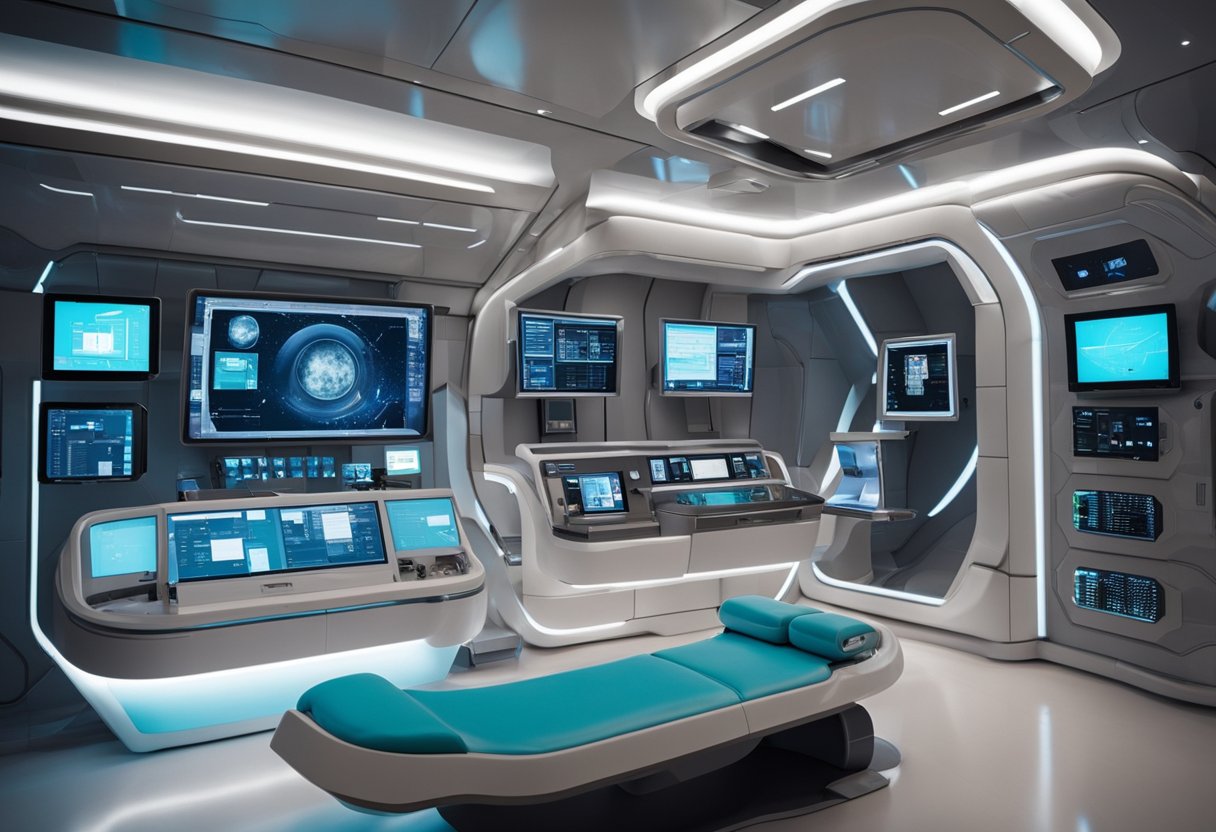
In developing remote healthcare solutions for space habitats, we must navigate complex policy frameworks and ethical considerations while managing public perception, especially related to global health and the safeguarding of vulnerable populations during epidemics.
We acknowledge that space healthcare operates within a regulatory environment that is still in its infancy. Policies need to be crafted that address infectious diseases and the health of both astronauts and potentially, space tourists, as detailed on SpaceVoyageVentures.com. Laws must evolve to support telemedicine, remote monitoring technologies, and ensure that these innovative solutions comply with global health standards. Safeguarding vulnerable populations in space habitats requires international cooperation and stringent guidelines to prevent the emergence or spread of infectious diseases.
Current Initiatives:
Gaining public trust is paramount when it comes to the acceptance and support of remote healthcare in extraterrestrial environments. Clear, transparent communication regarding the measures taken to prevent epidemics and the ethical implications of healthcare in space can help alleviate public fear. Our efforts must extend to active involvement with public forums, educational outreach, and engagement with concerns regarding the isolation of space habitats.
Engagement Strategies:
Through these efforts, we aim to build a foundational trust that upholds the enthusiasm surrounding space exploration and its impact on healthcare beyond Earth.

In this section, we address some of the most pressing inquiries regarding how astronauts receive medical care during space missions, the contributions of space exploration to terrestrial healthcare, and the use of telemedicine in space.
Astronauts have ready access to medical support facilitated through a combination of onboard medical kits, remote healthcare technologies, and direct communication with healthcare professionals on Earth. They are trained to perform certain medical procedures and can receive guidance from specialists when needed.
Space exploration has led to numerous innovations, including advances in telehealth, diagnostic devices, and patient monitoring technologies that are now beneficial in remote and rural regions on Earth. Collaboration between space agencies and medical researchers fosters growth in healthcare technology.
Telemedicine is vital for providing healthcare in space. It enables remote diagnosis, medical consultation, and emergency intervention, which are essential for the health of astronauts residing on the International Space Station or during deep-space missions.
Astronauts have access to psychological support, regular communication with loved ones, and private quarters to maintain their mental health. They also engage in leisure activities and have access to a variety of digital media to help manage stress and isolation.
NASA uses a sophisticated communication infrastructure, including satellite links and the Space Network, to ensure consistent and reliable data exchange for healthcare delivery. These strategies enable real-time telemedicine and remote health monitoring in space habitats.
Healthcare services for space missions are meticulously planned and budgeted by space agencies as part of mission costs. Innovative techniques, such as reusable medical instruments and advanced telemedicine, reduce the overall cost. Moreover, partnerships with private companies involved in space tourism and research may also play a role in cost management.